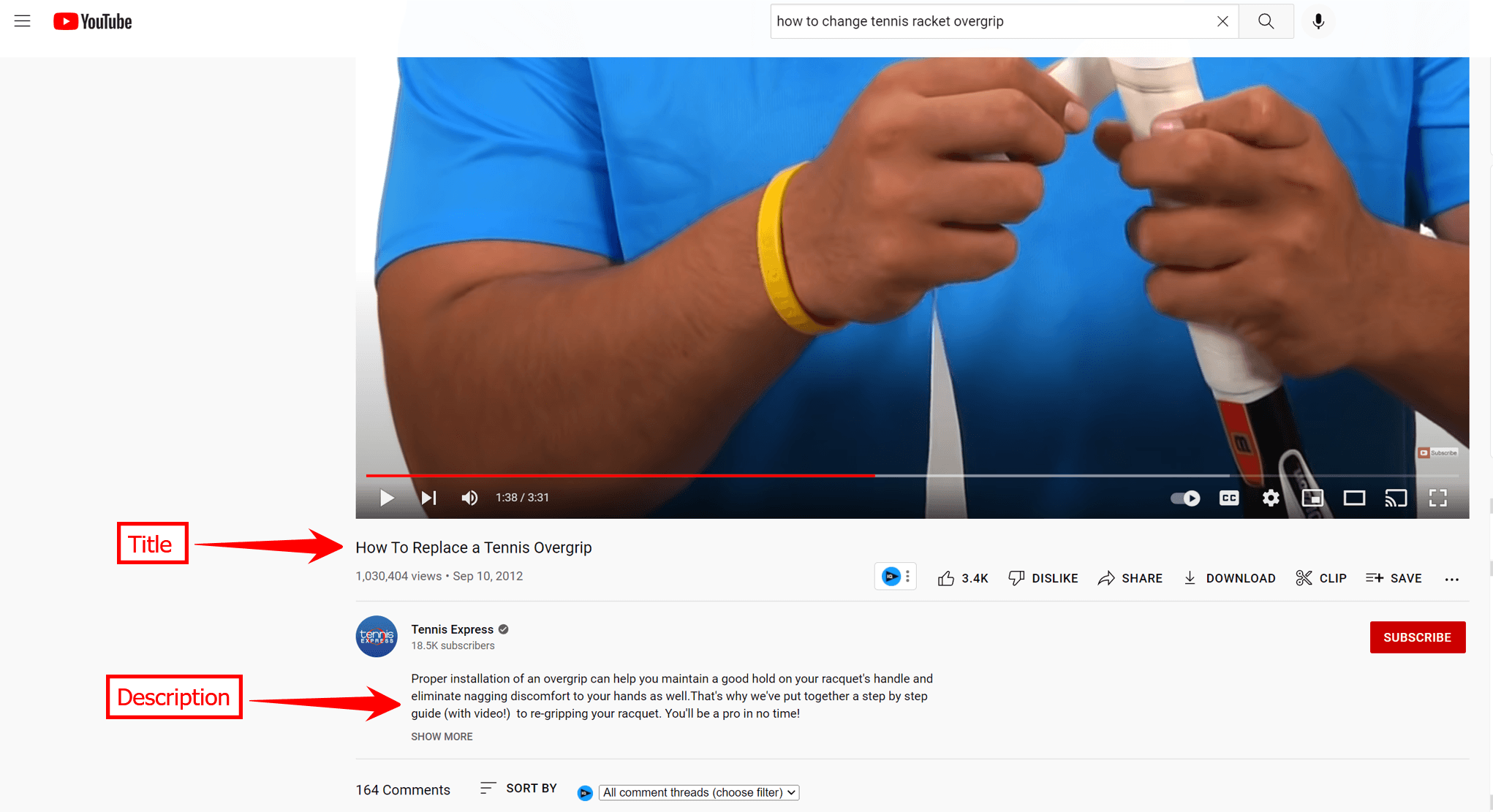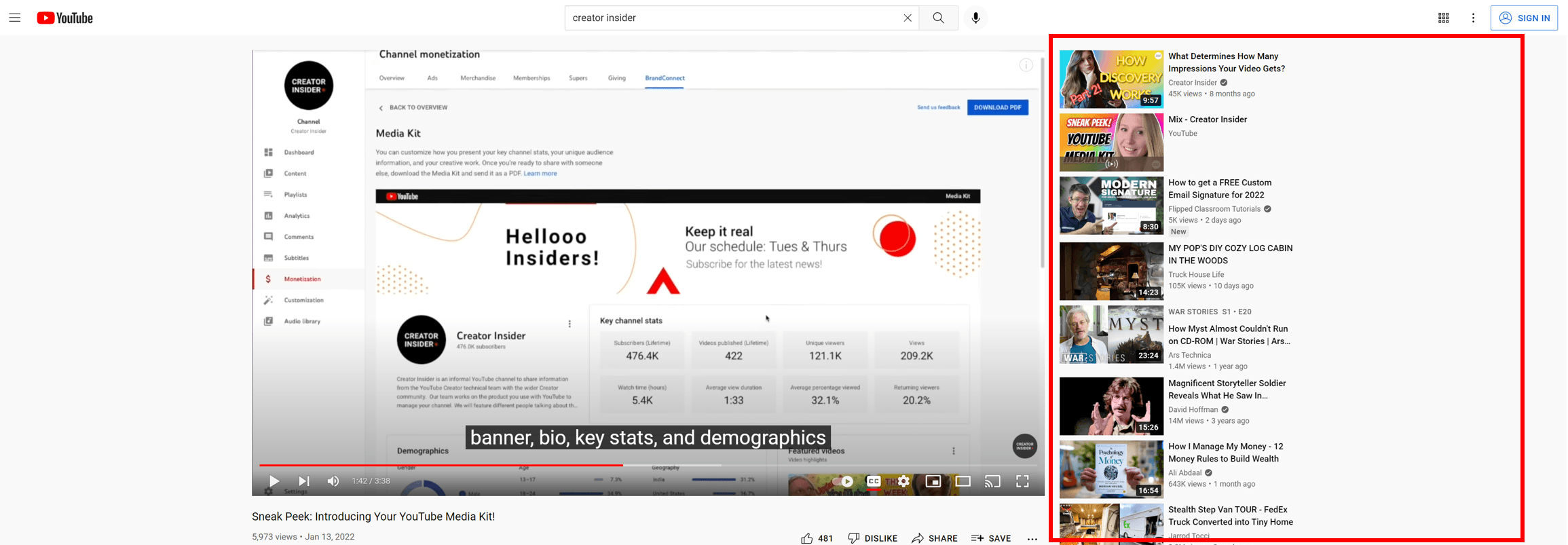YouTube is by far the most popular video platform on the planet. It’s so popular that it’s the second most used social platform after Facebook.
YouTube’s popularity is a double-edged sword in terms of marketing.
On one edge, you’ve got millions—no, BILLIONS—of viewers. If that wasn’t enough, YouTube is also the second most popular search engine on the internet, behind Google.
Then there’s the other edge: over 720,000 hours of video are uploaded to YouTube every day. That is a lot of videos competing to be watched.
How do you properly hold that sword? We’ll demonstrate how. Read on to learn how to master YouTube SEO and get your videos to rank higher than the competition.
What is YouTube SEO?
Traditional search engine optimization (SEO) is an internet marketing technique that employs a variety of tactics to help websites appear in search engine results – and rank well. Google and other search engines consider a variety of factors when deciding whether and where websites should show in search results.
YouTube, which is owned by Google, follows a similar model.
Its algorithm considers a variety of parameters, such as keywords and interaction metrics, when deciding if and where websites should show in search results.
YouTube SEO entails experimenting with various tactics to help your video rank higher in YouTube search results.
I’ll cover those strategies in the rest of this video, so don’t skip out on me now! If you do want to learn about a specific strategy, you can find timestamps in the video description!
Let’s go!
3 critical YouTube optimization tips
1. Use keywords to help people find your videos
Keywords are the foundation of any SEO effort, whether it’s on YouTube or elsewhere. They aid with the understanding of your material by various algorithms, allowing it to be discovered by the appropriate individuals.
Keywords should be utilised in the title, description, tags, and even within the substance of the video on YouTube.

That means, people, include your keywords in your videos.
Just a brief note: Tags aren’t as important as they once were, so concentrate on the other aspects of your YouTube videos.
Do you notice any commonly-used words or phrases in the top-ranked videos for your topic that you may utilise in your video? Keyword research features in tools like VidIQ and TubeBuddy make it easy to understand what terms your YouTube competitors are ranking for and how difficult it is to rank for those terms.
You can also utilize YouTube’s search predictions function to see what people are looking for when they want to watch a video.

If your channel is new or doesn’t have a large following, you should avoid using high-volume, popular terms. If the top videos originate from channels with a significant following, ranking these will be challenging. Until your channel expands, focus on keywords with low search traffic and low competition.
When you’re researching your topic, check out VidIQ and TubeBuddy’s features that show you how difficult it is to rank for your desired keywords.

And again, since keywords tell YouTube what’s in your video, they can help you appear in the Suggested section of YouTube. This is the section of YouTube where people fall into a rabbit hold of weird videos. You know the one.

According to YouTube, the Suggested feature is one of the top ways channels earn views. If your keywords indicate that your video covers content similar to what someone is currently watching, there’s a chance it will appear in the suggestions. This means it’s especially important to look at the top-ranking content and incorporate some of those keywords into your own video.
2. Make people want to click on and watch your videos
Okay, which video title sounds better?
- How to Bake a Cake
- How to Bake a Cake in 5 Easy Steps
Congratulations if you choose the second option! You can now take pride in a job well done. The first title is…alright. It’s short, but it’s tedious. The second title is self-explanatory. While being succinct, it tells you exactly what to expect in the video. This is an easy technique to increase your click-through rate (CTR).
The percentage of viewers who clicked on your video after watching it is measured by CTR, which affects your YouTube video ranking. A higher click-through rate tells YouTube that people are interested in your video, which increases your chances of appearing in related searches and suggestions. To attract folks to click, you’ll want to spice up your title, description, and thumbnail.
More specifically:
- Use descriptive power words in your title and description
- Accurately represent the content of your video
- Make thumbnails easy to read
- Use bold colors and graphics in your thumbnails
To avoid sounding like a broken record, I want to stress the importance of accurately representing the content of your video. Avoid using clickbait to entice viewers to watch your videos by sensationalizing or distorting the content.
Sure, if the title is intriguing, some people will click on your video. They’ll click away once they realize they’ve been duped. That extra click harms your YouTube optimization, which leads me to my next argument.
How long people watch your videos is an important YouTube ranking factor. So, for a third time, do not mislead your viewers. Instead, match their search intent, a.k.a. what people are actually looking for when they search.
Even if you’re not spamming, consider whether the objective of your video corresponds to the needs of searchers. Someone looking for a cupcake tutorial is unlikely to want to watch a 20-minute video about the advantages of rainbow sprinkles.
Make a note of what information the top videos cover if you’re targeting a specific keyword. Since these films are near the top, it’s safe to conclude that they’re offering the information that people desire.
While you should not copy any of these top videos word-for-word, you can use them as inspiration for your project. If your competitors are at an 11, you should turn your content up to 12. Go more in-depth. Share the results of a study you’ve conducted. Find a way to meet people’s needs while at the same time standing out from everyone else on YouTube.
And my last point before we move on to the next tip is to make the content of your video interesting. Which video would you rather watch?
- A ten-minute, unedited video of a person baking a cake using one camera angle and never addressing the viewer
- A ten-minute cake baking tutorial that includes close-up shots of the process, colorful graphics, and an explanation of each step from the video star
I hope you chose the second option. Don’t just use one continuous clip and call it a day. You’ll lose people quickly, no matter how accurate or helpful your video is.
Add humor to your script. Cut between camera angles. Include b-roll footage. Use sound effects. Add music. Do what you can to keep people’s attention and increase watch time.
You might just get some new subscribers with those changes, too.
What a great way to get to my last point.
3. Encourage viewers to engage with your videos
I mentioned earlier that YouTube is a social media platform. What’s an important part of social media? Engagement.
Likes, comments, new subscribers…all of these metrics play a role in your YouTube optimization. They let YouTube know that people find your video valuable and interesting enough to engage. Since YouTube’s goal is to provide content that people want to watch, and your video fits that description, you’ll likely see the view count rise.
While amazing films naturally lead to more engagement, there are a few things you can do to encourage your viewers to take action.
Asking for likes, comments, and new subscribers is the simplest way to obtain them. Request that your viewers hit the subscribe, like, or both buttons. Include a graphic in your videos that encourages viewers to subscribe.
Encourage comments by posing an open-ended question to your audience. You can even use a pinned comment on one of your videos to ask a question.
Ask individuals what tactics they utilized to get their films to the top of the YouTube results if you make a video about how to rank YouTube videos.
But again, if you create high-quality videos aimed at your target audience, there’s a good chance these interactions will occur without you having to ask. Just make sure you respond to people who respond to you. You can even ask follow-up questions to keep the conversation going.
While I’d love to keep this conversation going, that’s all I have on how to rank in YouTube results. For more marketing knowledge, subscribe to our channel and to our email newsletter, Revenue Weekly.









